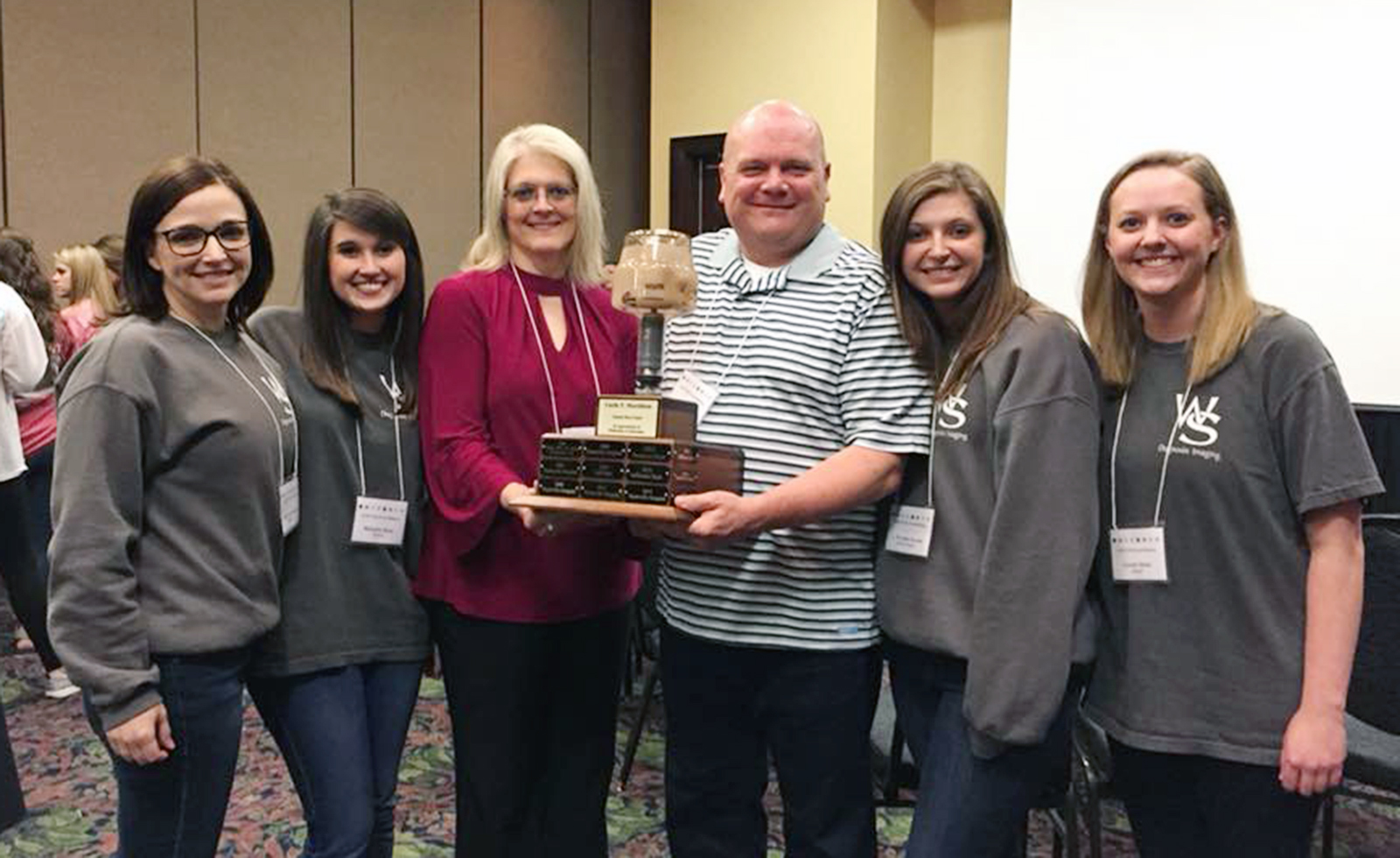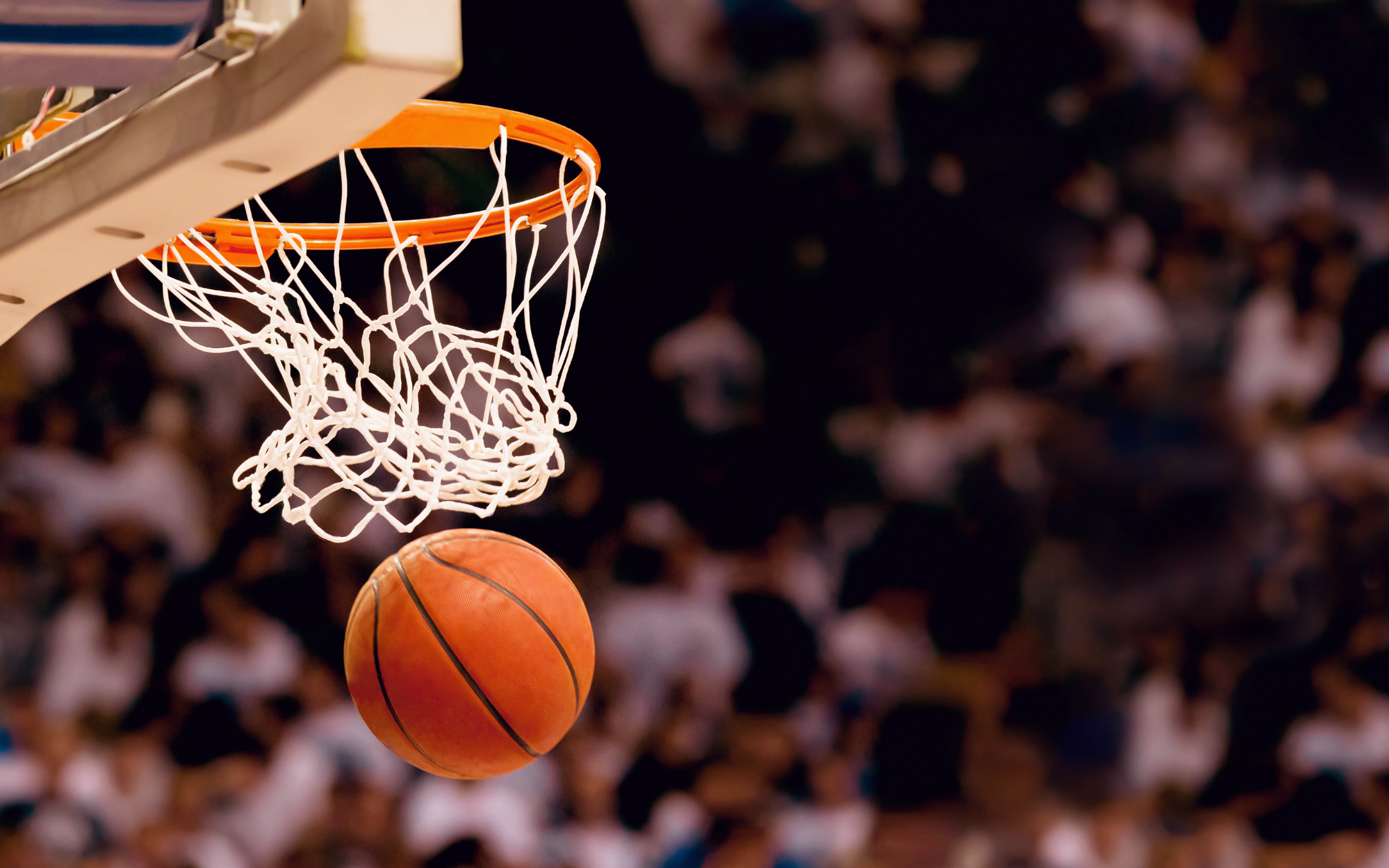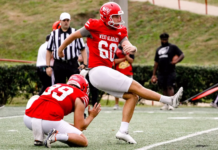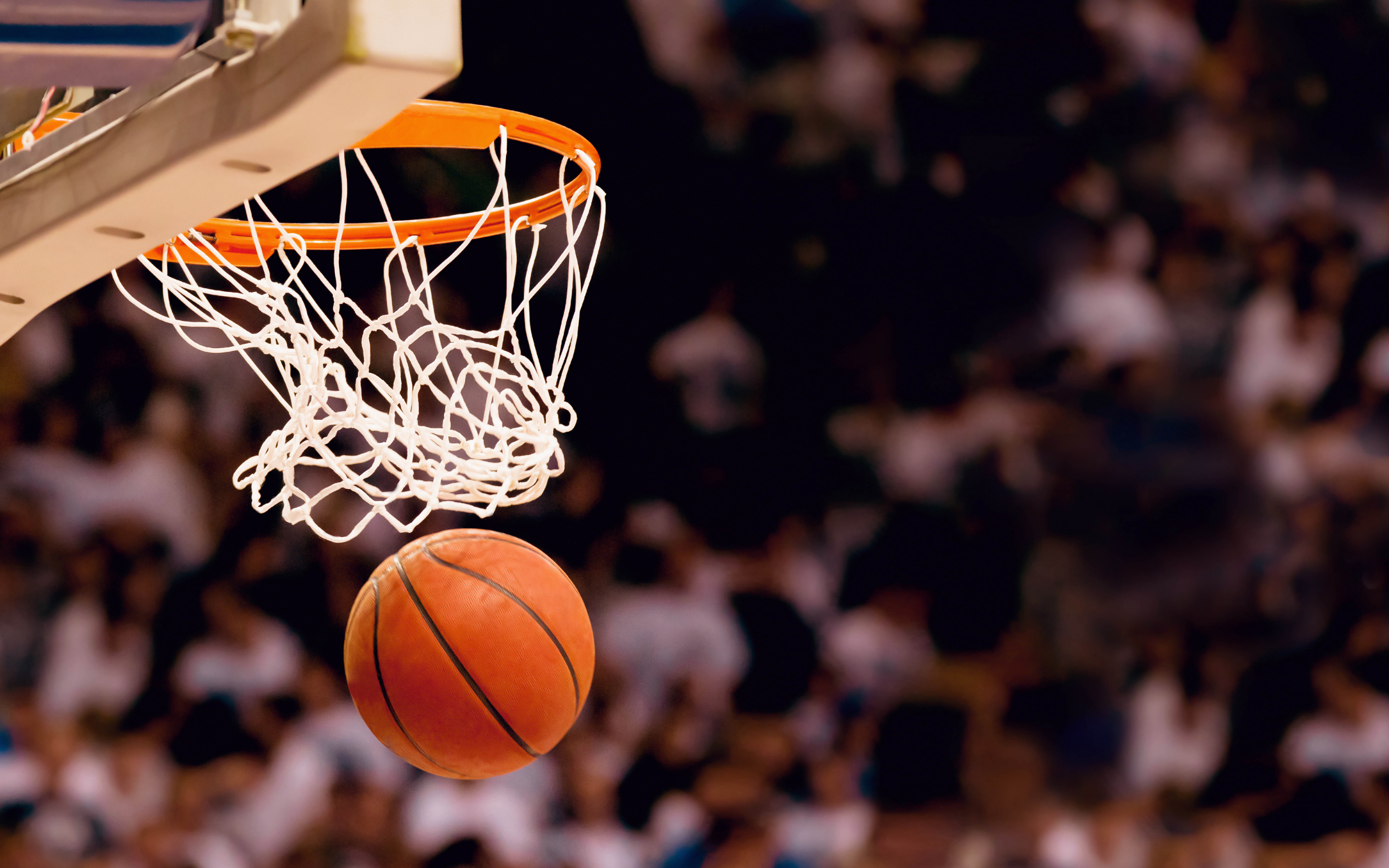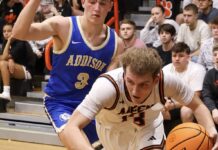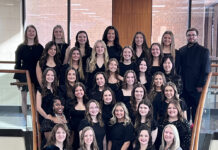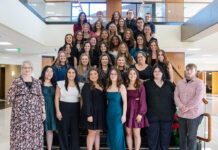The Wallace State Student Bowl team took first place in the scholar’s bowl competition at the annual conference of the Alabama Society of Radiologic Technologists. Pictured from left are Hollye Funderburk, Makaela Mote, instructors Kelli Rich and Jim Malone, Lelia Brooke Daniel and Lauren Dean.
HANCEVILLE – Diagnostic Imaging students from Wallace State Community College made a strong showing at the recent annual conference held by the Alabama Society of Radiologic Technologists. The Student Bowl team brought home a first-place trophy for their win in the scholar’s bowl competition and student Rebecca Watkins brought home the first-place prize in the science exhibit competition.
The win by the Student Bowl was a first for the program, with director Jim Malone getting to keep the trophy in his office until next year’s conference. “I’ve been coveting this award for quite some time,” Malone said, adding how proud he is of his students
The team was made up of Hollye Funderburk, Makaela Mote, Lelia Brooke Daniel and Lauren Dean.
Funderburk said their Diagnostic Imaging classes at Wallace State helped them prepare for the event, along with some books they had to study with.
The contest was pretty nerve-wracking, Dean said, the competing teams seated right next to each other. Funderburk said they used a code system of hand signals to communicate with each other without giving the answers away to their competitors. They won the competition by one point.
Malone said competing in the scholar’s bowl encourages students to put in additional study time which will in turn help them as they prepare to take their national registry exams.
Along with the trophy, the students won $200 they will split between them.
Rebecca Watkins received her first-place award in the science exhibit competition by showing how scientists are using diagnostic imaging to piece together strips of papyrus used to wrap ancient mummies, without damaging the wrappings or the artwork applied to them.
Watkins display explains how ancient Egyptians recycled previously-used papyrus to bury their dead, layering strips of the discarded paper or linen with paste over an embalmed body to create “a cocoon-like shell called a cartonnage.”
Similar to papier-mâché using old newspapers, the cartonnage featured several layers of ink-stained paper. Using diagnostic imaging equipment and techniques, the scientists were able to determine the different types of inks used on the strips of papyrus and use that to piece together the images and read what was written on the paper.
Unlike ancient text that’s been preserved in scrolls or carved onto walls, the messages found on the wrappings provided insights into the everyday lives of ancient Egyptians. Watkins’ report said that shopping lists, tax returns, bills of sale, hate mail, contracts and a “diary ramblings of a hypochondriac” were discovered.
Watkins’ display called “All About That Ink” includes verses of information set to the tune of “All About that Bass,” images and information matching the different verses, an example of the casting process, and an x-ray image she created using three different types of ink.
“I had fun doing it, even though it was a lot of work,” Watkins said.
She said she was very excited when she won the award. “I was super excited, I’m still excited,” she said.
The Diagnostic Imaging program is a five-semester program offering an associate in applied science degree. A new class is installed each fall, with applications accepted through June 1. For more information, visit www.wallacestate.edu or call 256-352-8000.

